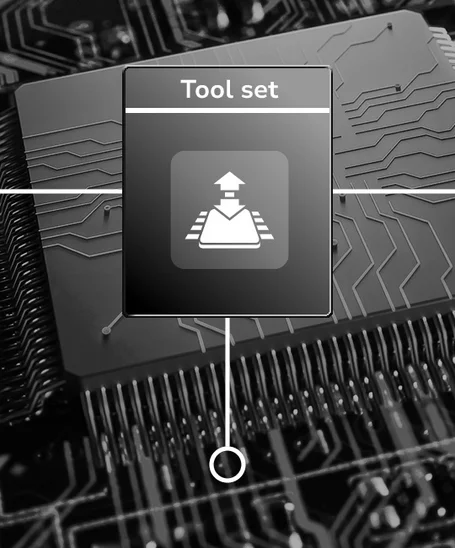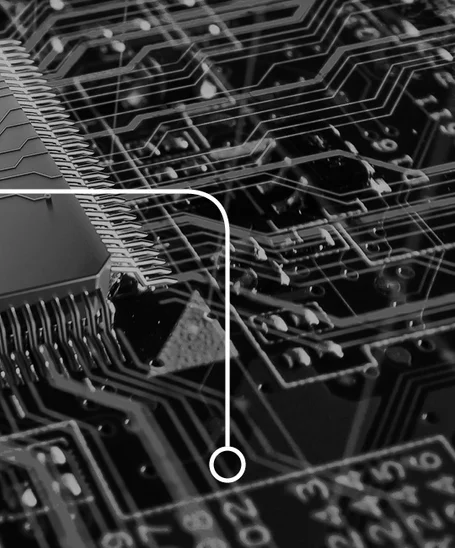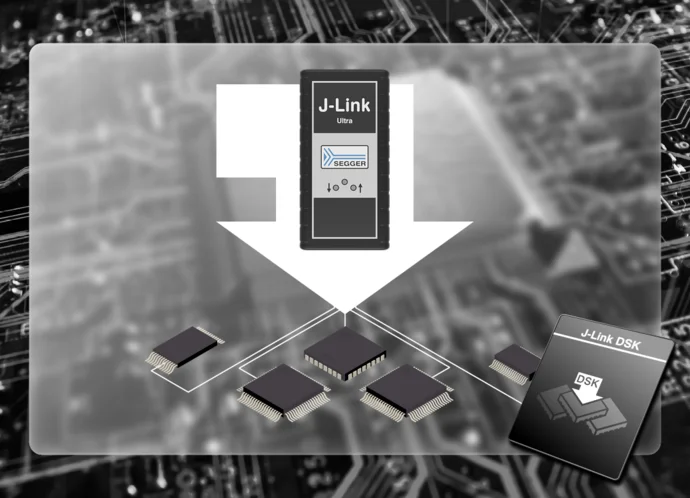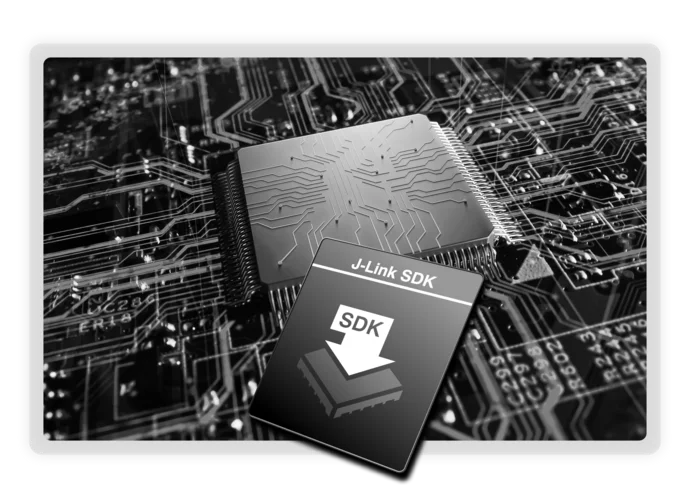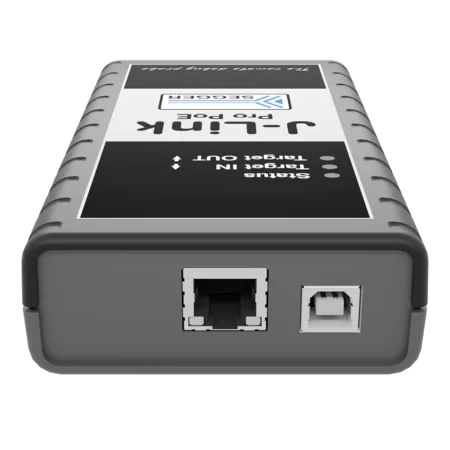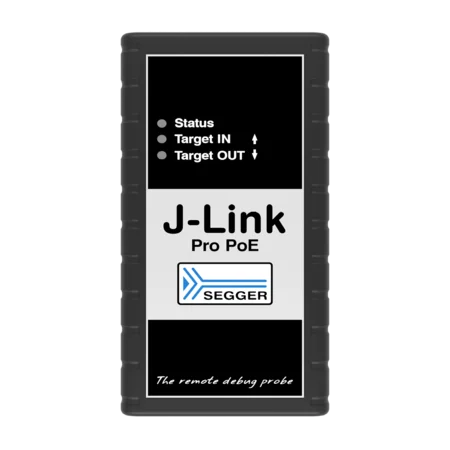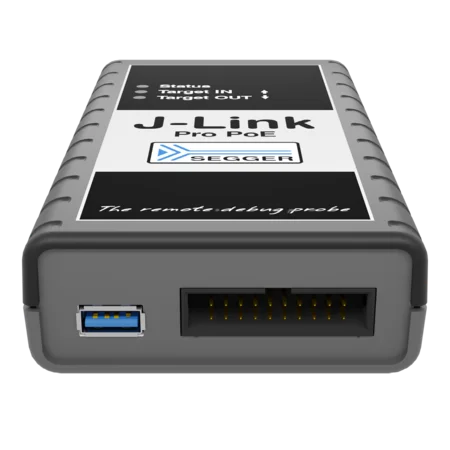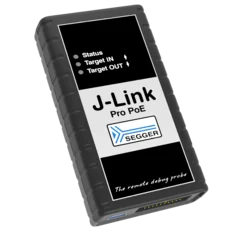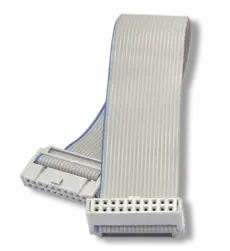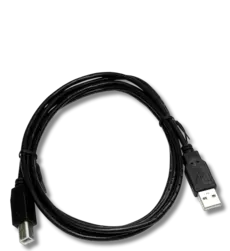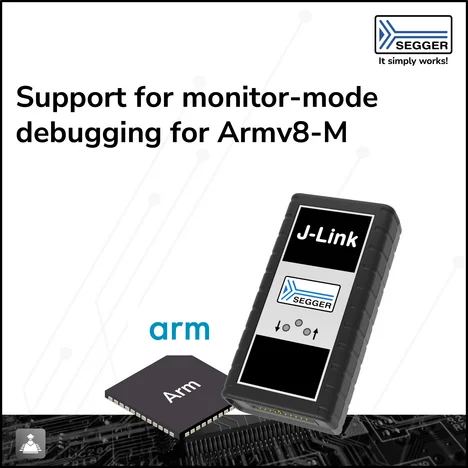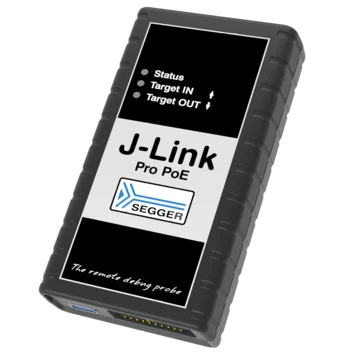
Overview
J-Link Pro PoE (Power over Ethernet) is SEGGER's high-end debug probe that is specifically designed for test farms. It integrates programming and debugging functionalities with remote power delivery via Ethernet. J-Link Pro PoE simplifies setup in large-scale testing environments and constitutes a high-performance solution for automated testing in both development and production environments.
Key features
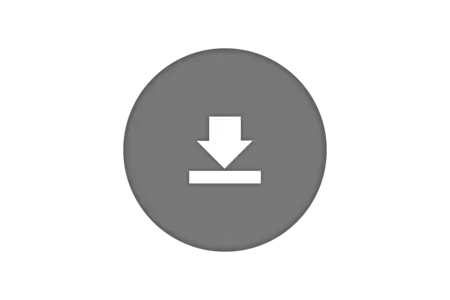
High download speeds
J-Link Pro PoE offers download speeds of up to 4 MB/s, ensuring that project development moves forward smoothly and reliably, with minimized download times.
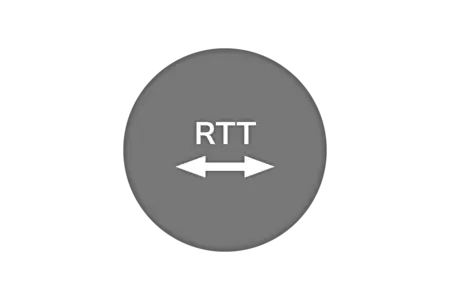
Real Time Transfer
J-Link Pro PoE offers Real Time Transfer (RTT), which provides a simplified path for information to travel when an application is running. Users can also easily monitor changes in operation.
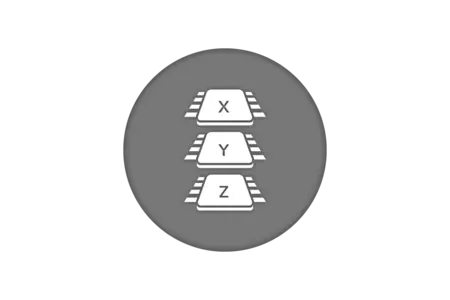
Broad CPU and IDE support
J-Link Pro PoE works with an extensive range of microcontrollers and integrated development environments (IDEs). It enables users to connect their selected microcontroller with their favorite IDE.
Supported devices
The list of supported manufacturers, families, devices, and SoCs includes tens of thousands of devices in hundreds of device families.
Device not listed? Please don’t hesitate to contact us.
Use cases
J-Link Pro PoE is ideal for creating test farms, and it contains robust features for efficient management of large-scale test environments. A test farm is a network of embedded system nodes — such as evaluation, prototype, and production boards — that is remotely accessible for testing and debugging.
By connecting these systems to a J-Link Pro PoE, developers and testers can manage and debug hardware without direct physical access to each device. This setup not only improves the testing process, it also supports automation and faster testing cycles, and enables tasks like regression testing and continuous integration. A test farm using J-Link Pro PoEs may consist of multiple test devices of the same type or entirely different devices.
Find out more about test farms, and learn how to build a J-Link test farm, in our Knowledge Base.
Communication testing
When testing communication protocols such as Wi-Fi, ZigBee, or Matter, large-scale test setups are crucial for ensuring reliability and performance. A test farm using J-Link Pro PoE provides a way to test devices under various conditions and ensure that they can handle interference and high traffic volumes.
Compatibility testing
A test farm is essential when testing new firmware updates or compiler changes across multiple devices. With J-Link Pro PoE, tests can be run simultaneously on different platforms, saving time and ensuring that updates are compatible with all devices in the test farm.
J-Link technology
Unlimited Breakpoints
Set as many breakpoints as you need in internal or external flash. Debug thoroughly, even when hardware breakpoints run out.
Monitor Mode
Keep essential system functions running while debugging. Perfect for real-time applications that must stay responsive.
Power Profiling
Measure and optimize energy consumption with high sampling rates and 50 µA resolution. Ideal for battery-powered or energy-harvesting devices.
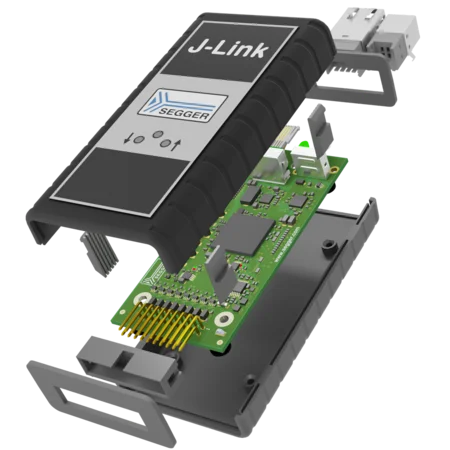
Tool set
J-Link Pro comes with a versatile suite of software tools that enhance its performance and flexibility for debugging and programming. Utilities such as J-Link Commander, J-Link Configurator, and J-Link Remote Server make it a powerful and convenient tool for any development setup. Below are selected highlights from this tool set.
J-Link DSK
The J-Link Device Support Kit (DSK) allows silicon vendors and users to add debug and flash programming support for new devices. A new device typically requires a flash loader and, in some cases, a script defining special connect and reset sequences.
The DSK includes the SEGGER flash loader as well as a collection of example script files for devices that require special handling.
J-Link SDK
The J-Link Software Development Kit (SDK) enables the integration of J-Link and J-Trace support into custom applications. It is used in professional IDEs, such as SEGGER Embedded Studio, to enable direct debugging via J-Link / J-Trace, as well as in customized production utilities. Available for Windows, Linux, and macOS, the SDK can be used with nearly any programming language or solution.
Software
All software is included free of charge, as are licenses for all J-Link-related SEGGER software products, such as J-Link Unlimited Flash Breakpoints, Ozone, RDI/RDDI, J-Flash, and J-Link GDB Server.
The J-Link Software and Documentation Package is available here:
Customer support
J-Link Pro PoE comes with one year (12 months) of Basic Support. Beyond that, SEGGER's Extended Coverage gives users the option to extend the hardware warranty and Basic Support for one additional year (12 months) or two additional years (24 months). These options are only available at the time of purchase, either through the Web Shop or upon request; adding coverage at a later date is not possible.
Technical specifications
| General | ||||||||
|---|---|---|---|---|---|---|---|---|
| Supported OS | Microsoft Windows (x86/x64), Linux (x86/x64/Arm), macOS (x86/Apple M1) | |||||||
| Electromagnetic compatibility (EMC) | EN 55032, EN 55035 | |||||||
| Operating temperature | +5°C ... +60°C | |||||||
| Storage temperature | -20°C ... +65 °C | |||||||
| Relative humidity (non-condensing) | Max. 90% rH | |||||||
| Mechanical | ||||||||
| Size (without cables) | 123mm x 68mm x 30mm | |||||||
| Weight (without cables) | 125g | |||||||
| Available interfaces | ||||||||
| Ethernet interface | 100 Mbit/s | |||||||
| PoE supply voltages | IEEE 802.3af PoE type 1, class 3 | |||||||
| USB interface | USB 2.0 (Hi-Speed) | |||||||
| Target interface | JTAG/SWD 20-pin USB-A (power only) | |||||||
| JTAG/SWD interface, electrical | ||||||||
| Target interface voltage (VIF) | 1.2V ... 5V | |||||||
| Current drawn from target voltage sense pin (VTRef) | < 25µA | |||||||
| Target supply voltage | 5V (when powered via USB) 5.25V (when powered via PoE) | |||||||
| Target supply current | Max. 400mA (when powered via USB) 1000mA (when powered via PoE) | |||||||
| Reset type | Open drain with 100 Ohms series resistor. Can be pulled low or tristated | |||||||
| Reset low level output voltage | VOL <= 10% of VIF | |||||||
| For the whole target voltage range (1.2V <= VIF <= 5V) | ||||||||
| LOW level input voltage (VIL) | VIL <= 40% of VIF | |||||||
| HIGH level input voltage (VIH) | VIH >= 60% of VIF | |||||||
| For 1.2V >= VIF <= 3.6V | ||||||||
| LOW level output voltage (VOL) with a load of 10 kOhm | VOL <= 20% of VIF | |||||||
| HIGH level output voltage (VOH) with a load of 10 kOhm | VOH >= 80% of VIF | |||||||
| For 3.6 <= VIF <= 5V | ||||||||
| LOW level output voltage (VOL) with a load of 10 kOhm | VOL <= 20% of VIF | |||||||
| HIGH level output voltage (VOH) with a load of 10 kOhm | VOH >= 80% of VIF | |||||||
| JTAG/SWD interface, timing | ||||||||
| Target interface speed | Max. 50 MHz | |||||||
| SWO sampling frequency | Max. 100 MHz | |||||||
| Data input rise time (Trdi) | Trdi <= 20ns | |||||||
| Data input fall time (Tfdi) | Tfdi <= 20ns | |||||||
| Data output rise time (Trdo) | Trdo <= 10ns | |||||||
| Data output fall time (Tfdo) | Tfdo <= 10ns | |||||||
| Clock rise time (Trc) | Trc <= 3ns | |||||||
| Clock fall time (Tfc) | Trc <= 3ns | |||||||
| Analog power measurement interface | ||||||||
| Sampling frequency | 200 kHz | |||||||
| Resolution | 50 uA | |||||||
Package content
Accessories
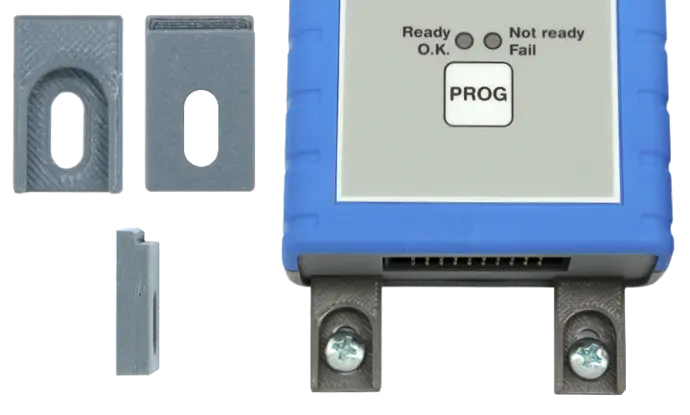
SEGGER's mounting brackets provide a reliable solution for securely fastening Flasher in-circuit programmers. Designed for stability and ease of use, these brackets ensure an organized and professional setup. Mounting brackets are available directly from the SEGGER shop.
Alternatively, SEGGER offers users the option to 3D print mounting brackets themselves. A downloadable ZIP file is provided, containing a STEP file for modifications, an STL file ready for 3D printing, and a PDF file with detailed dimensions.
FAQ
Can I use J-Flash with J-Link Pro?
Yes. J-Link PRO includes a preinstalled license for J-Flash on the probe itself. No setup is required — simply connect the J-Link PRO and start using J-Flash.
What is the advantage of J-Link versus simple probes such as FTDI-based systems?
J-Link offers numerous advantages: the dedicated J-Link software provided by SEGGER, which enables seamless integration with common IDEs; the availability of Unlimited Flash Breakpoints for debugging software running in microcontroller flash memory; its high speed; and its simple, fast flash download capability.
In contrast to most simple probes, J-Link supports adaptive clocking as well as SWD and SWO. It also operates more reliably, as it is not merely a simple USB-to-JTAG converter. Instead, it uses the intelligence of its built-in CPU to ensure robust communication, particularly in situations where the target CPU runs at low clock speeds.
Can I work with more than one J-Link at the same time on the same machine?
Yes. You can connect any number of J-Links to your PC without additional configuration. Each J-Link is automatically registered with its unique serial number, allowing you to use multiple J-Links simultaneously.
I have multiple Arm cores in my JTAG chain. How can I debug them simultaneously with J-Link?
Two or more debuggers can use the same J-Link at the same time. Multi-core debugging requires multiple debuggers or multiple instances of the same debugger. Simply specify in your debugger which device in the scan chain you want to debug. No additional configuration is required.
Does J-Link support the Embedded Trace Buffer (ETB)?
Yes. J-Link supports ETB on Cortex-M3, Cortex-M4, Cortex-M7, and Cortex-A/R devices, if implemented by the target.
Does J-Link support the Micro Trace Buffer (MTB)?
Yes.
Does J-Link support the Embedded Trace Macrocell (ETM)?
No. ETM requires a separate connection to the Arm CPU and a device with built-in ETM support. ETM is supported by the J-Trace product family.
What is the maximum voltage that can be handled by the galvanic isolation of the Ethernet?
The Ethernet data lines are isolated in accordance with IEEE 802.3, with a test voltage of 1500 Vrms for one minute. This does not apply to the Ethernet shield, which has a direct electrical connection to the USB shield and resistive and capacitive coupling to the probe ground. For effective isolation, an unshielded twisted pair Ethernet cable must be used.
Latest news
Get in touch with us
Have questions or need assistance? Our Embedded Experts are here to help!
Reach out to us for:
- Licensing quotes
- Technical inquiries
- Project support

